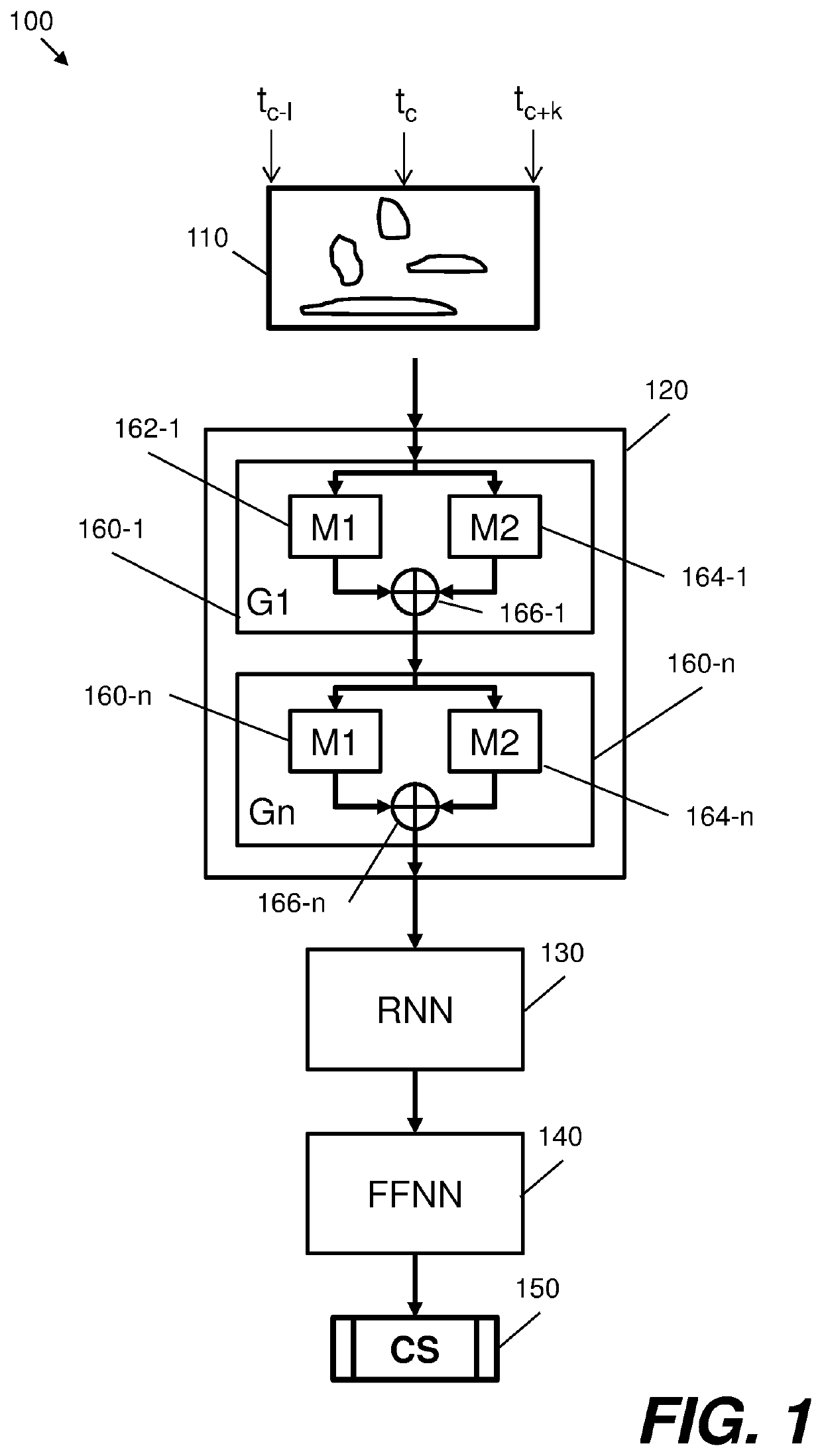Neural acoustic model
a neural acoustic model and model technology, applied in the field of speech analysis, speech recognition, instruments, etc., can solve the problems of derailment of machine interpretation success, difficulty in translating pressure fluctuations in air into parsed commands, and lack of human-level responsiveness and intelligence in current systems
- Summary
- Abstract
- Description
- Claims
- Application Information
AI Technical Summary
Benefits of technology
Problems solved by technology
Method used
Image
Examples
example implementations
[0112]Certain examples described herein may be applied to speech processing including automatic speech recognition. The neural network model described herein may be used to implement an acoustic model in a speech processing system. By combining different neural network architectures in series, and by using an efficient implementation for the convolutional neural network architecture that initially processes the audio data, an audio processing system may be provided that improves both (audio) frame level accuracy and word error rate, yet is able to perform inference quickly enough to be reactive in normal operating conditions (i.e. to allow real-time or near real-time operation).
[0113]Certain examples described herein may increase a frame level accuracy for a given set of computing resources. Frame level accuracy may be defined as the extent to which audio data is correctly mapped to a sound unit classification. In comparative cases, this mapping was performed on a per-audio-frame ba...
PUM
 Login to View More
Login to View More Abstract
Description
Claims
Application Information
 Login to View More
Login to View More - R&D
- Intellectual Property
- Life Sciences
- Materials
- Tech Scout
- Unparalleled Data Quality
- Higher Quality Content
- 60% Fewer Hallucinations
Browse by: Latest US Patents, China's latest patents, Technical Efficacy Thesaurus, Application Domain, Technology Topic, Popular Technical Reports.
© 2025 PatSnap. All rights reserved.Legal|Privacy policy|Modern Slavery Act Transparency Statement|Sitemap|About US| Contact US: help@patsnap.com



